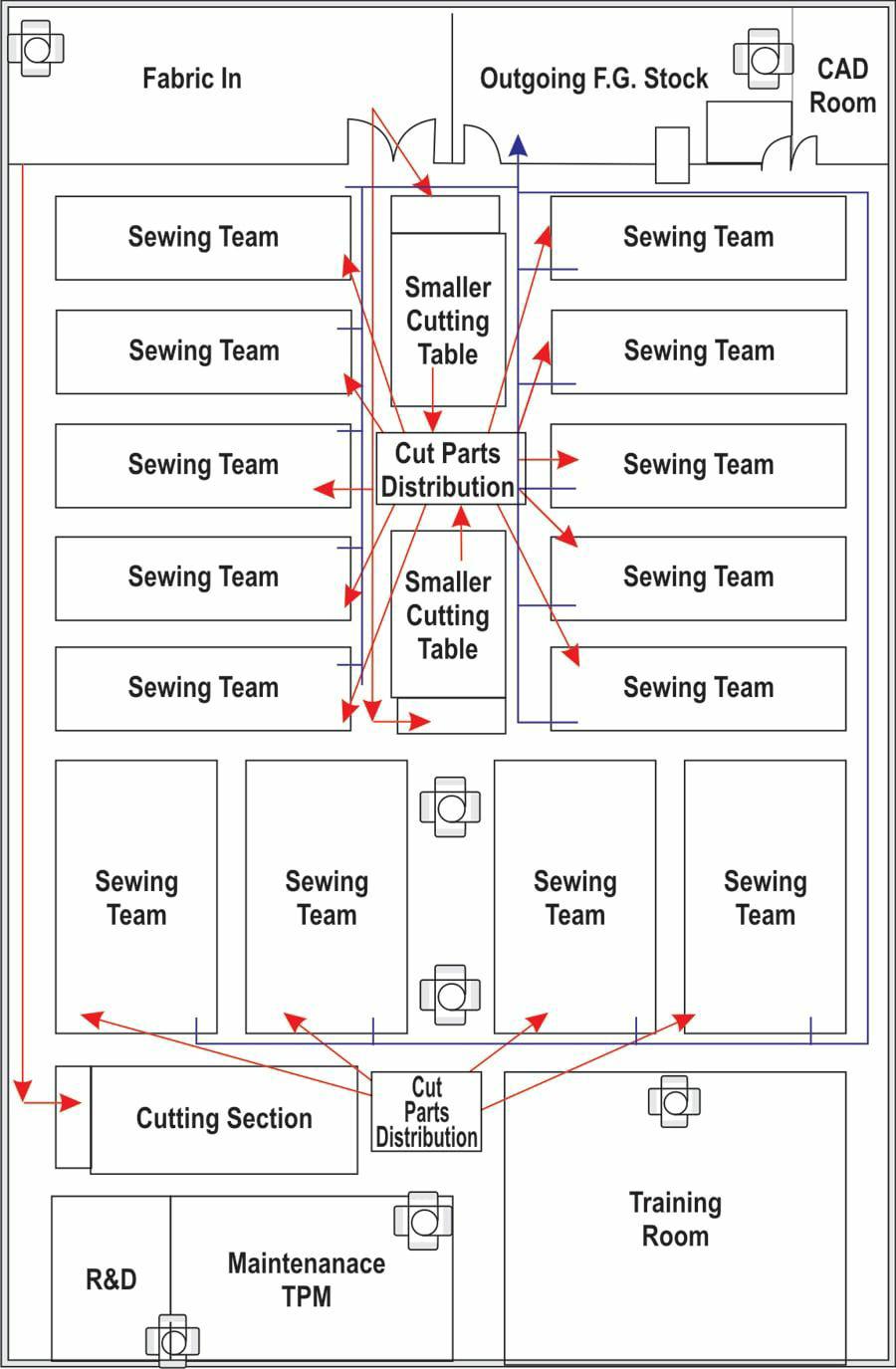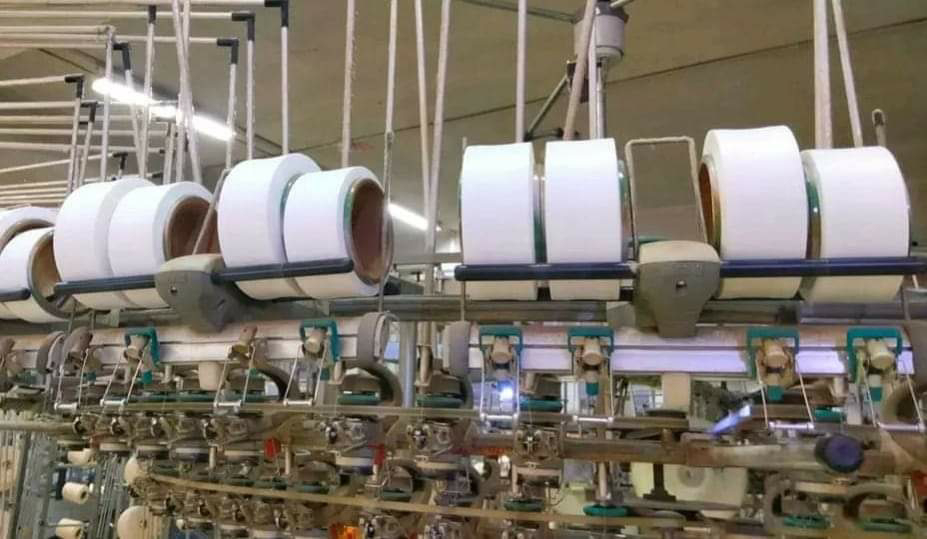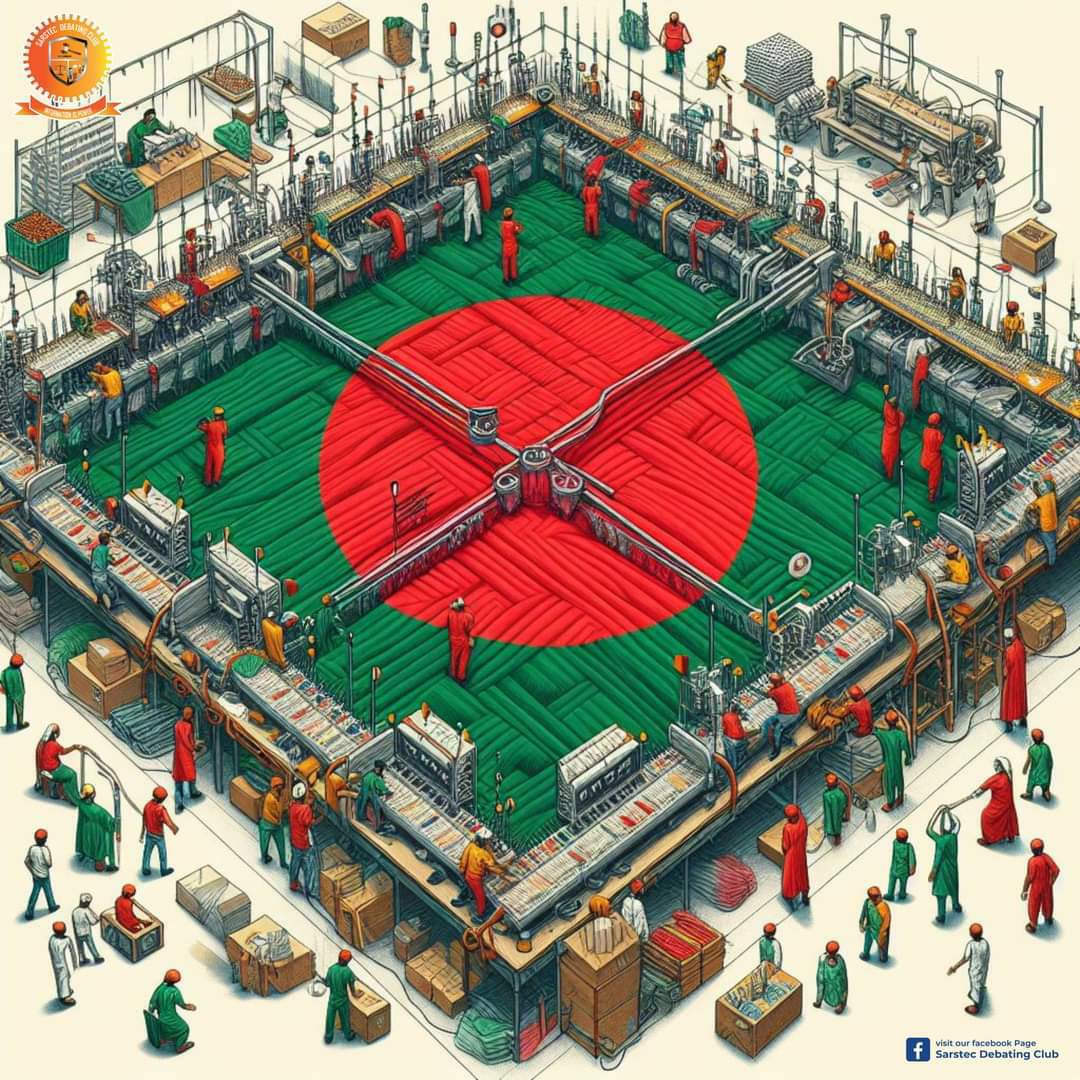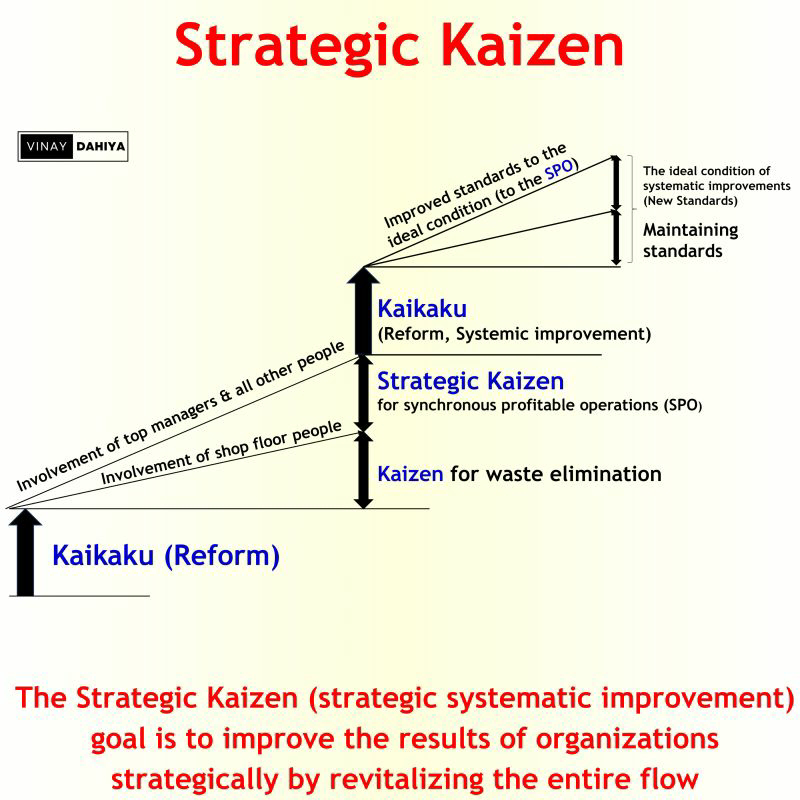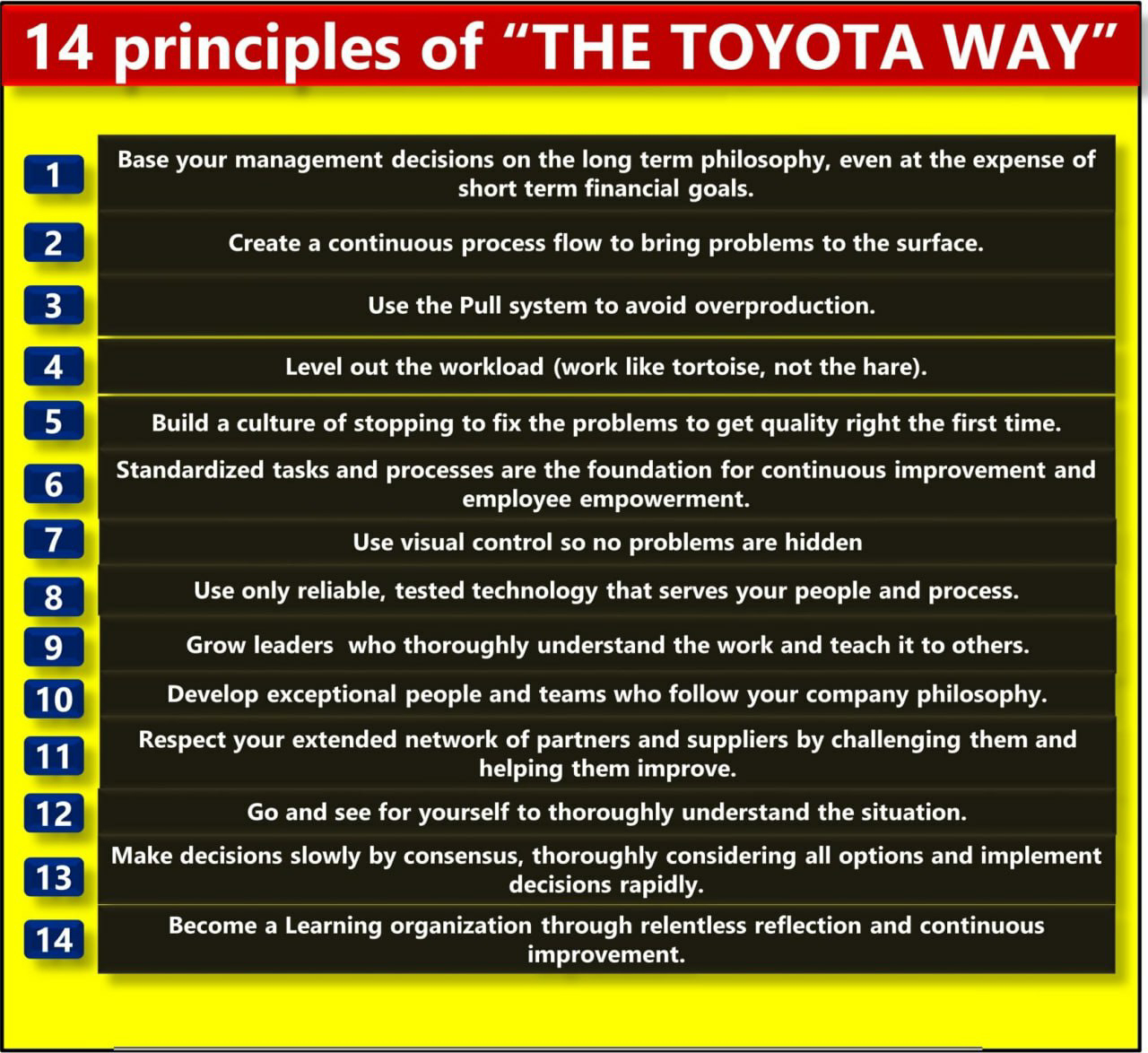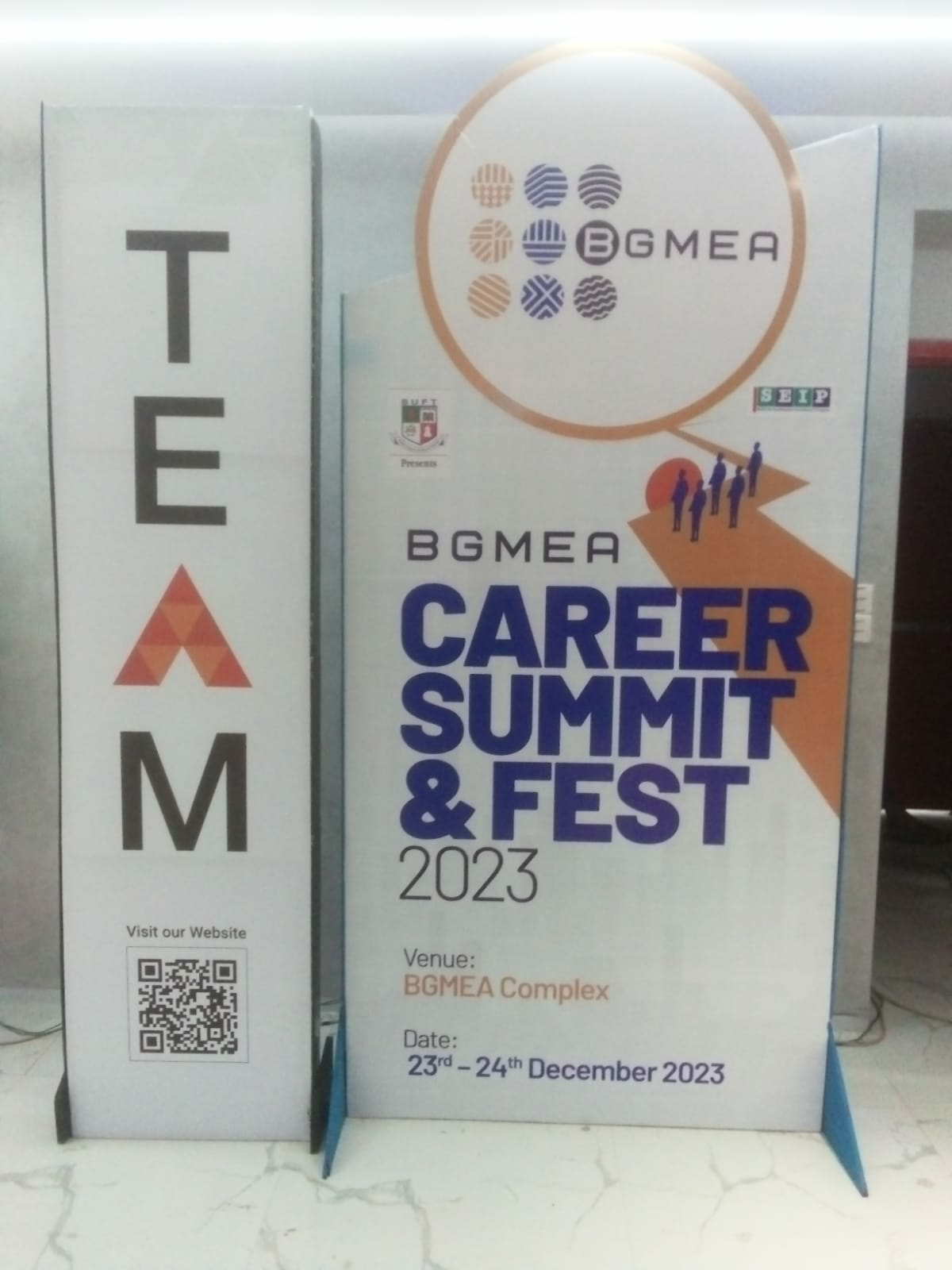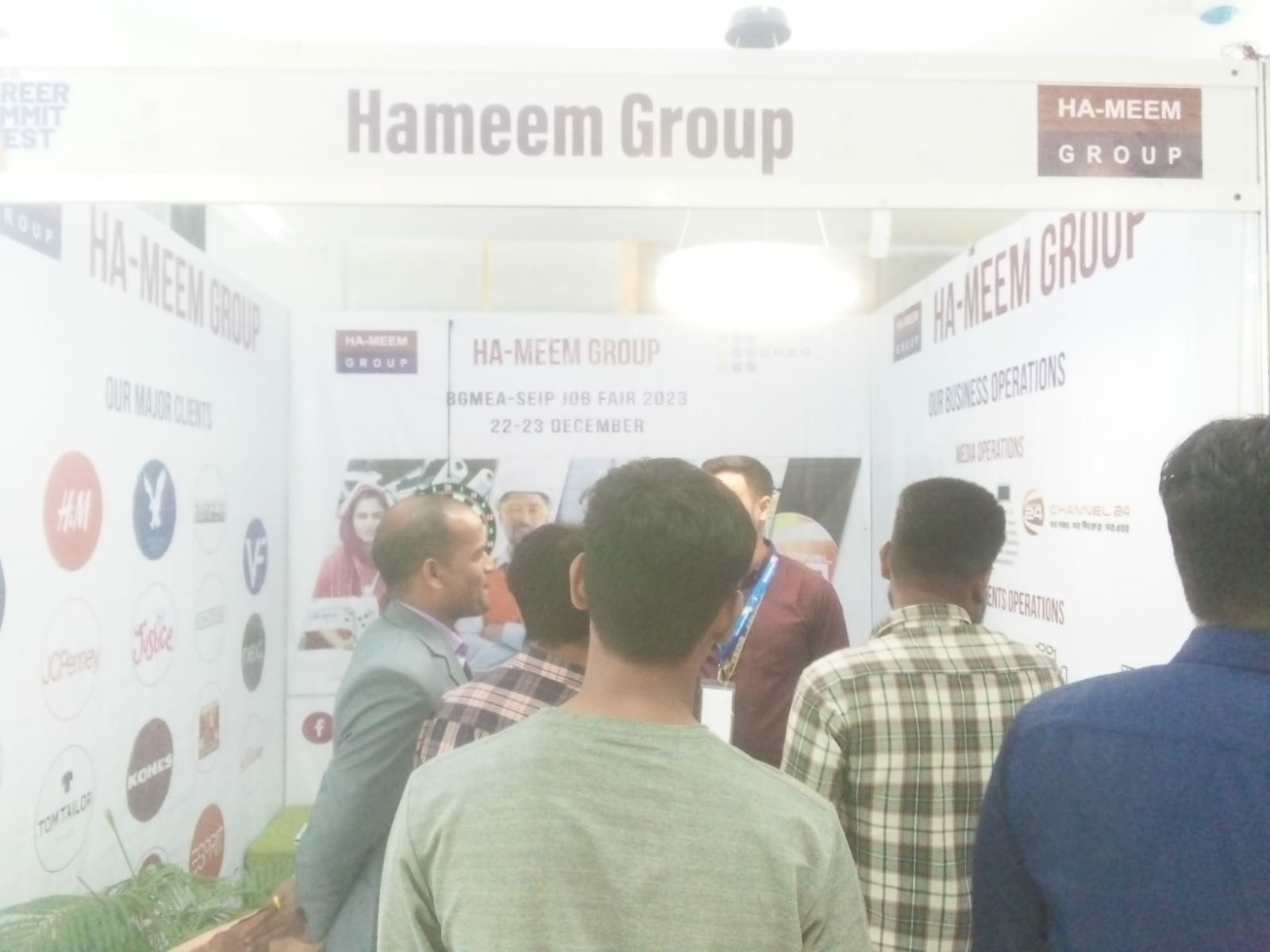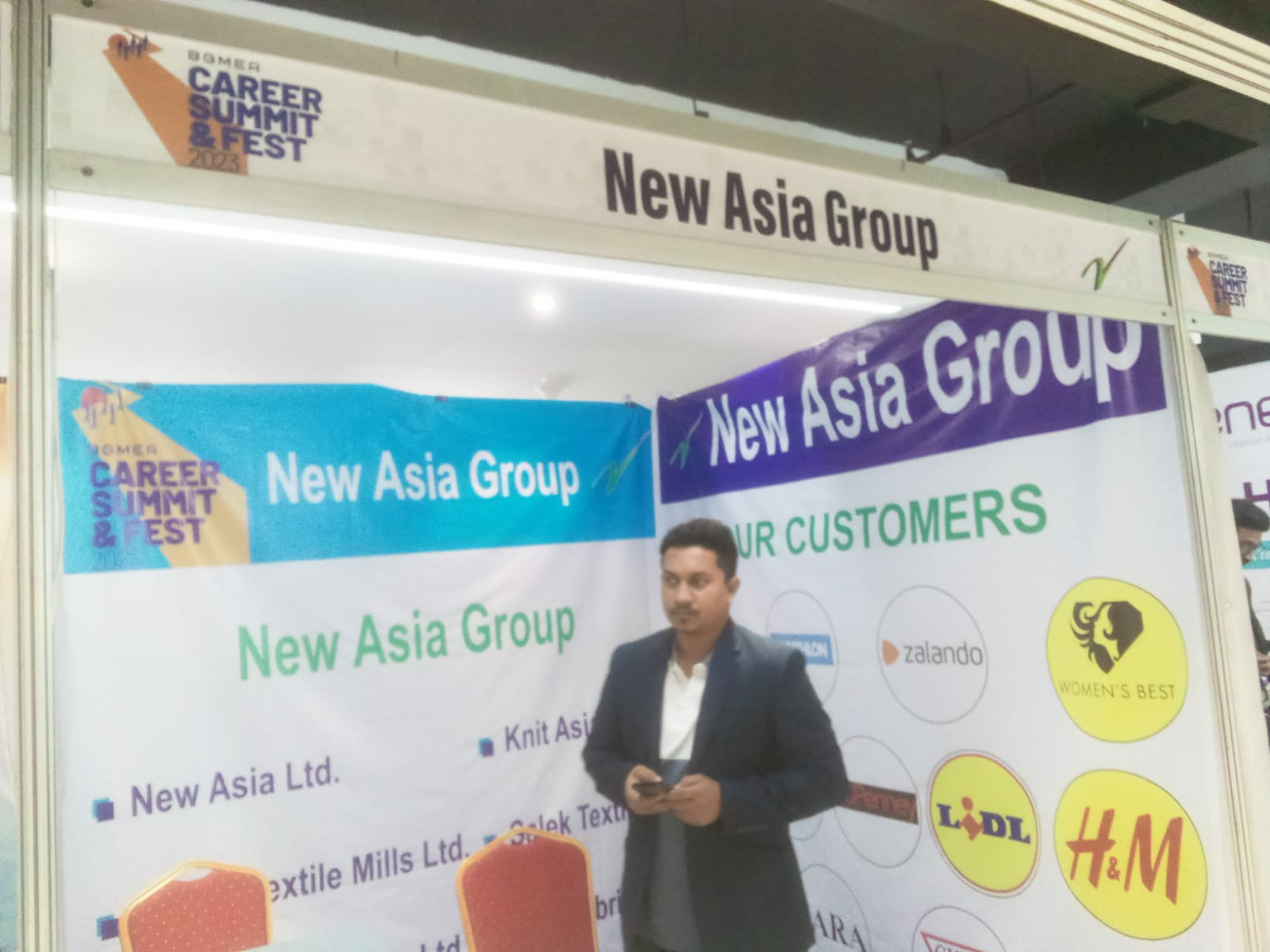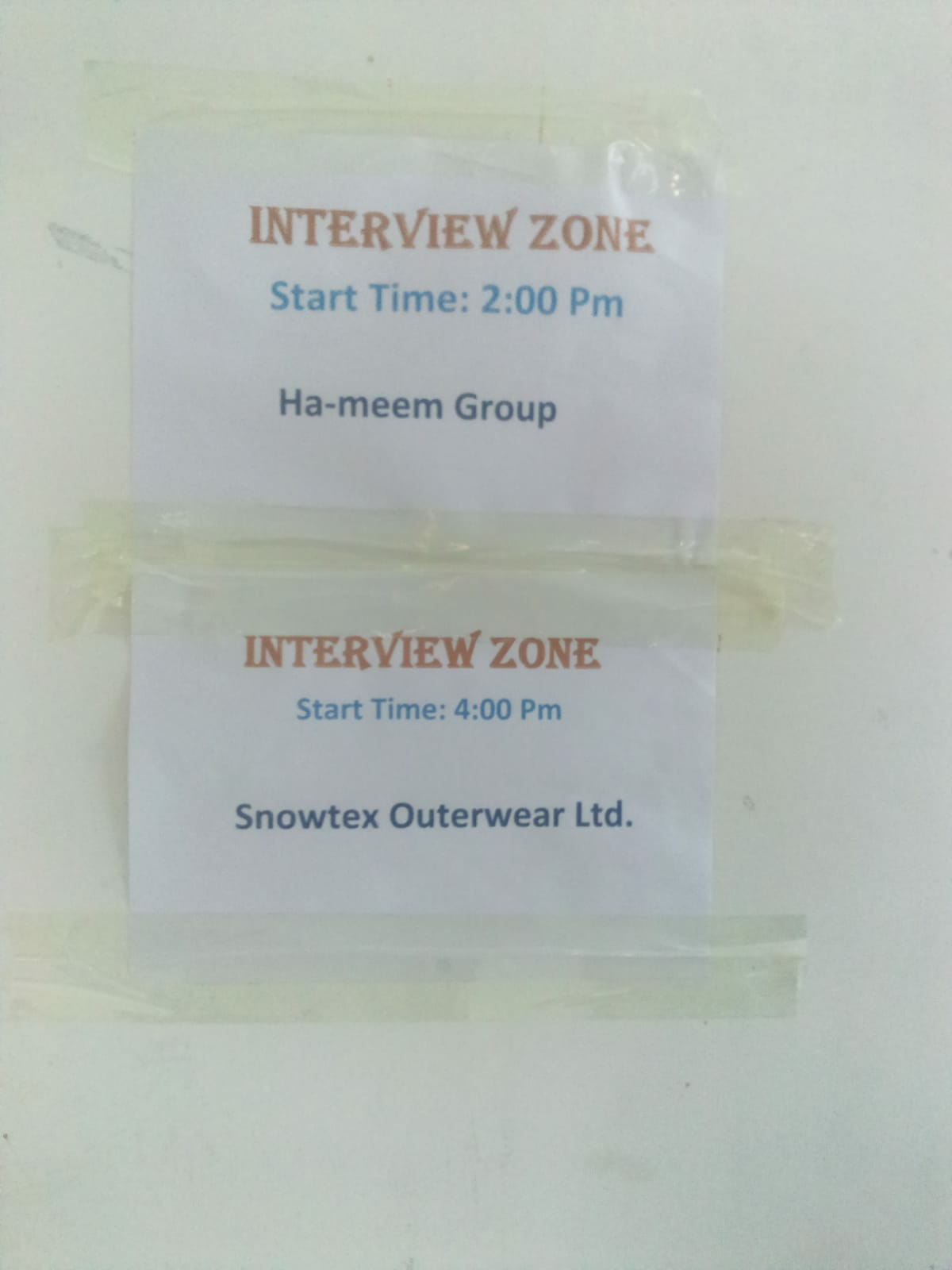সিভি লেখার সময় যে নিয়মগুলো মাথায় রাখতে হবে
ইন্টারভিউ বিষয়ক আমাদের পূর্ববর্তী ব্লগপোস্টে আমরা জেনেছিলাম ড্রিম জব পেতে হলে আমাদের বাধা হলো শুধু ইন্টারভিউ এবং সিভি। এদের মধ্যে সিভির গুরুত্বই বেশি, কারণ সিভি দেখে পছন্দ হলে তবেই না ইন্টারভিউয়ে ডাক আসে! আজকের ব্লগে আমরা এই বিষয়গুলো সম্পর্কেই জানবো, যেমন CV কি, সিভি ফরমেট, সিভি আর রেজুমের মধ্যে পার্থক্য। সাথে আলোচনায় আসবে সিভি লেখার নিয়ম, কিছু উপকারী টিপস, এবং শেষমেশ একটি আদর্শ সিভি কেমন হতে পারে তার হাতে-কলমে উদাহরণ। তবে আর দেরি কেন, চলুন শুরু করা যাক!
সিভি কি (What is CV) ?
সিভি (CV) তথা Curriculum Vitae (কারিকুলাম ভাইটা), ল্যাটিনে যার অর্থ দাঁড়ায় Course of Life. আমেরিকান বা ব্রিটিশ, দুই ইংরেজিতেই CV শব্দটির ব্যবহার রয়েছে। কোনো ব্যক্তির জীবনের শিক্ষাগত যোগ্যতা, পেশাগত দক্ষতা এবং এক্সট্রা কারিকুলার অ্যাক্টিভিটিজের বিবরণ সংক্ষেপে দেয়া থাকে সিভিতে। কর্পোরেট জগতে CV বলতে সাধারণত যা বোঝানো হয় তা আবার অ্যাকাডেমিয়ার CV থেকে আলাদা।
চাকরির বাজারে সিভি দিয়ে বোঝায় শর্ট সিভি যা সাধারণত দুই পৃষ্ঠার হয়ে থাকে, যাতে সংক্ষেপে মোটামুটি চাকরি-প্রার্থীর একটি ওভারভিউ দেয়া হয়ে থাকে। অ্যাকাডেমিয়ার জগতে সিভি বলতে হেভি এক্সটেনসিভ সিভিগুলো বুঝায়, যা অনেক বড় হয়; এমনকি ৬৯ পৃষ্ঠাও হতে পারে! এতে অন্য সবের পাশাপাশি পাবলিকেশনে ফোকাস করা হয়, যা অ্যাকাডেমিয়াতে আবেদন করতে গেলে অনেক গুরুত্বপূর্ণ। এমন একটি উদাহরণ দেখে আসতে পারেন এখান থেকে।
সিভি নাকি রেজুমে (CV or Resume) ?
CV আর রেজুমে, এই দুইটি নিয়ে আমরা প্রায়শই বিপত্তিতে পড়ি। এই দুইটির মধ্যে সুনির্দিষ্ট পার্থক্য পরিষ্কার করে জানা থাকলে আর বিপাকে পড়তে হবে না আশা করি। এনসাইক্লোপিডিয়া
ব্রিটানিকার তথ্যমতে, Résumé মূলত ফরাসি শব্দ Résumer থেকে এসেছে, যা বুঝায় “to summarize,” অর্থাৎ সিভি আর রেজুমের মূল পার্থক্য এর সাইজে তথা আকারে। আবার ইন্ডাস্ট্রিভেদে শব্দ দুইটি দুই অর্থ প্রকাশ করে থাকে। যেমন, চাকরির ক্ষেত্রে রেজুমে ব্যবহৃত হয় বেশি, আবার অ্যাকাডেমিয়াতে CV শব্দটির চল বেশি।
যদিও উত্তর আমেরিকার দেশগুলোতে- আমেরিকা, কানাডায় এই দুইটি অদল বদল করে ব্যবহৃত হয়। এখানে CV বলতে শর্ট সিভিকে বুঝায়, যা চাকরির জগতে, কর্পোরেট জগতেও সমানতালে ইউজ হয়। এমনটাই জানা যায়, ইউনিভার্সিটি অফ ক্যালিফোর্নিয়ার (ডেভিস) বরাতে। আমরা উদ্দিষ্ট নিবন্ধে CV বলতে কর্পোরেট জগতে চাকরির আবেদনের সময় যে CV তৈরি করতে হয়, সেটিকেই বোঝাব। সিভি আর রেজুমের পার্থক্য বিষয়ে আরও জানতে আমাদের এই ব্লগটি পড়ে ফেলুন!
সিভি লেখার নিয়ম: কী কী থাকা জরুরী?
সিভি অবশ্যই ঠিক ফরম্যাটে লিখতে হবে। এ ব্যাপারে আমরা সিভি ফরমেট সেকশনে সবিস্তারে জানবো, তবে সংক্ষেপে বলতে- সাব সেকশনগুলো ঠিকভাবে লিখতে হবে। যেমন প্রথমে হেডার, সেখানে কন্টাক্ট ডিটেইলস, তারপর পার্সোনাল প্রোফাইল শুরু। সেখানে সিভির অবজেক্টিভ/সামারি, এরপর চাকরির পূর্ব অভিজ্ঞতা, পড়াশোনা, স্কিল এবং অন্যান্য বিষয়াদি ঠিকঠাকভাবে দিতে হবে। এর মধ্যেই পড়বে- সঠিক ফন্ট বাছাই করা, লে-আউট ঠিক রাখা, অযথা অনেক বেশি ছবি না দেওয়া, অতিরিক্ত তথ্য দেওয়ার বদলে সুনির্দিষ্ট এবং প্রাসঙ্গিক তথ্য দেয়া ইত্যাদি।
অবজেক্টিভ (Objective)
সিভির অবজেক্টিভ/সামারি ঠিকঠাক মত লিখতে হবে। সামারি বা অবজেক্টিভ কী? এখানে আপনার ক্যারিয়ারে লক্ষ্য ও উদ্দেশ্য কী এ ব্যাপারে গুছিয়ে লিখুন, এটাই অবজেক্টিভ। আর আপনি যদি ইতোমধ্যেই অভিজ্ঞ হয়ে থাকেন, তবে সেই অভিজ্ঞতাটুকু সংক্ষেপে তুলে ধরাটা সামারি। কিন্তু এটা আবার এক লাইনে নামে মাত্র লিখে দিলেই হবে না, সাধারণত বলা হয় ১০০ শব্দে নাতিদীর্ঘ অথচ সারমর্মপূর্ণ প্যারাগ্রাফে লিখতে হবে।
কন্টাক্ট ইনফরমেশন (Contact Information)
কন্টাক্ট ইনফরমেশন সঠিকভাবে লিখতে হবে। পুরো নাম, প্রফেশনাল টাইটেল, ইমেইল, মোবাইল নাম্বার, লিঙ্কডইন এবং হোম অ্যাড্রেস দিতে হবে ঠিকভাবে। অনেকেই এখানে সামান্য ভুল করেন, সিকুয়েন্স ঠিক রাখেন না। এখানের সিকুয়েন্সটাও কিন্তু সমানভাবে গুরুত্বপূর্ণ। নামের আগেই যেমন লিঙ্কডইন আসবে না, তেমনি মোবাইল নাম্বারও কিন্তু লিঙ্কডইনের পরে যাবে না।
শিক্ষাগত যোগ্যতা (Educational Qualification)
শিক্ষাগত যোগ্যতাও সিভিতে সুন্দর করে দিতে হবে। নিজের পড়াশুনার বিবরণ ঠিক না হলে সেই প্রার্থীকে কেই বা নিতে চাইবে বলুন! তবে সুখবর হলো এই অংশটা বাকিগুলোর থেকে সহজতর। ডিগ্রির সাল, তারপর ডিগ্রির নাম, বিষয় এবং প্রতিষ্ঠানের নাম। অনার্স করে থাকলে সেটিও দিতে পারেন (অপশনাল)।
একটু হ্যাক বলে নিই, যদি আপনার প্রথম চাকরির আবেদন করতে যান, আর একদম ফ্রেশার হয়ে থাকেন অর্থাৎ অন্য কোনো জব এক্সপেরিয়েন্স নেই, সেক্ষেত্রে পড়াশোনার অংশটাই সিভিতে শক্তপোক্ত করে দিতে পারেন। পড়াকালীন কোনো এক্সট্রা-কারিকুলার অ্যাক্টিভিটিজ, এক্সট্রা ডিসিপ্লিন, কোর্স বা ক্লাবিং এর অভিজ্ঞতাগুলো যোগ করা যেতে পারে। এতে আপনার দক্ষতাগুলো এবং কাজের অভিজ্ঞতা সম্পর্কে তারা ভালো ধারণা পাবে।
কাজের অভিজ্ঞতা (Work Experience)
প্রাসঙ্গিক চাকরি বা কাজের অভিজ্ঞতা এবং আপনার বিভিন্ন অ্যাচিভমেন্ট সিভিতে দিতে হবে। খুব ব্যতিক্রম ছাড়া এটাই সিভির সবথেকে গুরুত্বপূর্ণ অংশ, এখানে আপনার পূর্ববর্তী সকল কর্মস্থলের কাজের এবং অর্জনের বিবরণ দেবেন। কিন্তু থামুন, একটু ভাবুন; বাকি প্রতিযোগীরাও তো এমনটাই করবেন, তাহলে আপনাকে আলাদা করে তুলবে কীসে? উপস্থাপনা দ্বারা নিজেকে স্বতন্ত্র করে পরীক্ষকদের কাছে তুলে ধরতে হবে আপনারই।
সবসময় মেজারেবল অর্থাৎ পরিমাপ করা যায়, এমন অর্জনগুলো হাইলাইট করে তুলে ধরার চেষ্টা করবেন। আর কী করেছেন তার থেকে বেশি গুরুত্ব যেন পায় কতটা সুচারুভাবে কাজগুলো আপনি করেছেন, আর তার ইমপ্যাক্টটা কতটুকু ছিল। আর সেই নিরিখে বর্তমান কোম্পানিকে আপনি কী কী অফার করতে পারবেন। সবকিছু ব্যাটে বলে মিলে গেলেই না, ইন্টারভিউয়াররা বলে উঠবে এই লোককেই তো আমাদের চাই!
স্কিল (Skill)
সিভিতে চাকরির পোস্টের সাথে প্রাসঙ্গিক স্কিলগুলো দিতে হবে। একবিংশ শতকে এসে নিশ্চয়ই এই স্কিল বিষয়টার গুরুত্ব নতুন করে বলে দিতে হবে না। তবে এই স্কিল সেকশনে যা মাথায় রাখতে হবে, তা হলো রিলেভেন্স বা প্রাসঙ্গিকতা। যেখানে অ্যাপ্লাই করছেন সেখানকার জবের সাথে যে দক্ষতাটা যায়, খাপ খায় সেটিই দিন।
নচেৎ আপনার একটা কোর্সেরা বা ইউডেমি সার্টিফিকেট থাকলেই যে সেটি ঢুকিয়ে দিতে হবে তা কিন্তু নয়। এজন্যই জব ডেসক্রিপশন পড়া এত জরুরি। সবথেকে ভালো হয়, একটা স্প্রেডশিটে নিজের সব স্কিলগুলো নোট ডাউন করে ফেলুন, এতে খুঁজে পেতে সুবিধা হবে, আর নির্বাচন করতেও।
রেফারেন্স (Reference)
রেফারেন্স হিসেবে কখনোই আত্মীয় স্বজনকে রাখবেন না। আপনার কোন শিক্ষক অথবা কর্মস্থলে আপনার সিনিয়র কাউকে রাখতে পারলে ভালো হয়। যাদেরকেই রাখুন না কেন অনুমতি নিয়ে নিন। সিভিতে কখনোই ভুল তথ্য দিবেন না।
সিভি লেখার নিয়ম: সিভি ফরমেট
পৃথিবীর সব সিভির ফরম্যাটে আপনাকে নাম, ঠিকানা, কন্টাক্ট, লিঙ্কডইন ইত্যাদি দিতে বলবে। আপনাকে ক্যারিয়ার অবজেক্টিভ লিখতে বলবে, আপনাকে আপনার কাজগুলো ফুটিয়ে তুলতে বলবে। আপনার একাডেমিক ও প্রফেশনাল অর্জনগুলো উল্লেখ করতে হবে। আপনি কি কি ট্রেনিং করেছেন সেসব লিখতে হবে। আপনার কম্পিউটার স্কিল, সফট স্কিল আপনি যদি কাজই না করেন, তাহলে যত রঙ্গিন ফরম্যাটেই আপনার CV দেন না কেন, আপনি কি ইন্টারভিউ কল পাওয়ার যোগ্য দাবিদার?
ব্লগের এই অংশে আমরা সিভির ফরম্যাটিং সম্পর্কে খুব খুঁটিনাটি পর্যায়ে আলাপ সারবো। সরাসরি কথায় প্রবেশ করি, মার্জিন কম রাখুন। গুগল ডক বা মাইক্রোসফট ওয়ার্ড যেটাতেই CV লিখুন, খেয়াল করলে দেখবেন মার্জিন কিন্তু কাস্টমাইজেশন করে নেয়া যায়। যদি আপনার তথ্য বেশ ভালো পরিমাণে হয়, এবং মার্জিন দরকারের অতিরিক্ত বড় দেয়া থাকে বাই ডিফল্ট, সেক্ষেত্রে কমিয়ে ফেলুন। কারণ, আমরা সবাই জানি CV সচরাচর ২ পৃষ্ঠা হয়ে থাকে, এরপর প্রতি ১০ বছরের অভিজ্ঞতার দ্বারা ১ পৃষ্ঠা করে বাড়ে। তাই অযথা জায়গা খরচের মানে নেই।
ব্যক্তিগত কন্টাক্ট ডিটেইলস প্রয়োজনের অতিরিক্ত দেয়ার দরকার নেই। এতে জায়গা বেশি লাগে এবং কাজের জিনিস দেয়ার জায়গা থাকে না। এর উদাহরণ ধরুন, আপনার নিজের, বাসার, এবং অফিসের সেলফোন নম্বর দিলেন, বা একাধিক মেইল দিলেন যার দরকার নেই বলতে গেলে। একটা দেয়াই যথেষ্ট। সেকশনগুলো ভালো করে আলাদা করুন। দেখে যেন বোঝা যায়, এগুলো আলাদা আলাদা সাব-সেকশন। হেডিংগুলো একটু বড় দিন, সাধারণ লেখার তুলনায়। অবশ্যই ফ্ল্যাশি, স্পোর্টি ফন্ট অ্যাভয়েড করুন, সাদামাটা ফর্মাল ফন্ট ব্যবহার করুন, যেমন টাইমস নিউ রোমান, বা কন্সটানশিয়া বা এরিয়ালই রাখতে পারেন।
ফরম্যাট নয়, কাজগুলোকে সুন্দরভাবে ফুটিয়ে তোলাটাই সিভির সবচেয়ে বড় চ্যালেঞ্জ।
বিশাল প্যারাগ্রাফের বদলে সংক্ষেপে মূলকথা লিখুন, সম্ভব হলে বুলেট পয়েন্টে। বুলেট পয়েন্ট ব্যবহার করুন পূর্বের জব অভিজ্ঞতার কথা বলার সময়। আগের চাকরির দায়িত্বগুলো পয়েন্ট করে করে লিখুন, গদ্য করে লেখার বদলে। এক পৃষ্ঠা থেকে অন্য পৃষ্ঠার ট্রানজিশন যাতে মসৃণ হয়, সেদিকে খেয়াল রাখুন। কোনো পৃষ্ঠায় যে পয়েন্ট শুরু করেছেন, তা সেখানেই শেষ করুন। অর্ধেক লিখে বাকি অর্ধেকের জন্য পরের পৃষ্ঠায় যাবেন না। এগুলো দৃষ্টিকটু। আর ভুলেও বানান ভুল করা যাবে না, টাইপো একদম যেন না হয়। একটা বানান ভুল, আর আপনার চাকরি না পাওয়ার সম্ভাবনা বেড়ে শতের কাছাকাছি চলে যাওয়া!
মনে রাখবেন, সিভির ফরম্যাট ভালো হলেই তা পড়ে দেখার চান্স বাড়ে। সেই সাথে বাড়ে ইন্টারভিউ কলে ডাক পাবার সম্ভাবনাও। তাই CV নিজ ডিভাইসে সেইভ করুন ডক ফাইল হিসেবে। কারণ প্রতি সেমিস্টারে (অথবা চাকরিজীবীদের জন্য প্রতিটি প্রতিষ্ঠানে কাজের সুবাদে কিছুদিন পরপর) তো আপডেট হবে সেটি। ফাইলের নামটা ঠিক করে লিখুন। “My CV.doc” এজাতীয় নাম বাদ দিতে হবে আজ থেকেই। এই নাম দেখলে স্বভাবতই রিক্রুটারদের আগ্রহ কমে যাবে আপনার প্রতি। নাম হবে “নিজের নাম” স্ল্যাশ বা আন্ডারস্কোর সিভি ডট পিডিএফ (Name_CV.pdf). আর হ্যাঁ, সিভিটা তাদের অবশ্যই পাঠাবেন পিডিএফ হিসেবে।
সিভি লেখার নিয়ম: কিছু টিপস
আসলে সিভির ফরম্যাটিং বলি আর গাইডলাইন বলি উপরের পয়েন্ট দুটোতেই টিপস যা দেয়ার তা ইতোমধ্যেই দেয়া হয়ে গেছে। তবুও ছোট করে কিছু টোটকা বলে রাখি এ পর্যায়ে এসে। মনোযোগ দিয়ে যে প্রতিষ্ঠানে আবেদন করছেন সেখানের সম্পর্কে রিসার্চ/স্টাডি করুন। সেখানের কালচারের সাথে কিছুটা সামঞ্জস্য কিন্তু রাখতে হবে সিভিতেও। আবার কিছু ভোকাবুলারিগত দক্ষতা রাখতে হবে আপনাকে, এটি বাকি আর দশটা CV থেকে এগিয়ে রাখবে আপনার সিভিকে। আর সিভিতে প্রদত্ত তথ্যে কোনো অস্পষ্টতা রাখা যাবে না।
CV সুস্পষ্ট হতে হবে, আর হতে হবে নাতিদীর্ঘ। শেষমেশ রিলেভেন্সি থাকতে হবে, অপ্রাসঙ্গিক কিছু থাকা যাবে না সিভিতে। পরীক্ষকদের কাছে দিনে শতশত, কখনও বা হাজারে হাজার সিভি আসে। সেসবের মাঝে যাতে আপনারটা নজরে আসে, সেজন্য চোখে পড়ার মতো করে লিখতে হবে। আর এক সিভি সবাইকে না পাঠিয়ে টার্গেট অর্গানাইজেশন অনুযায়ী এডিট করে ফাইন টিউন করে পাঠাবেন, এতে ভালো ফল পাওয়া যাবে।
CV লেখার নিয়ম: কমন কিছু ভুল
সঠিক ই-মেইল ঠিকানা ব্যবহার না করা
আমরা অনেক সময় pandalover@gmail.com বা iamthegreat@yahoo.com এই ধরণের ই-মেইল ব্যবহার করে থাকি। কিন্তু এই ধরণের ই-মেইল ব্যবহার করা একদম উচিত নয়। সব সময় নিজের নামের সাথে মিলিয়ে সংক্ষিপ্ত ই-মেইল ঠিকানা খোলার চেষ্টা করুন। প্রয়োজনে শুধুমাত্র চাকরি বা প্রফেশনাল কাজের জন্য আলাদা ই-মেইল ঠিকানা ব্যবহার করতে পারেন।
ই-মেইল করার সময় সঠিক সাবজেক্ট বা বিষয় লিখা
যে প্রতিষ্ঠানে চাকরির জন্য আবেদন করবেন, সে প্রতিষ্ঠান কী ধরণের ফরমেট অনুসরণ করে আপনার সিভি পাঠাতে বলেছে সেটি ভালোভাবে অনুসরণ করুন। সাবজেক্ট বা বিষয়ে “CV” বা “My CV” এই কথাগুলো লিখবেন না। আপনি যে প্রতিষ্ঠানে আবেদন করবেন তাদের কাছে এমন নামে শত শত সিভি জমা পড়ে।
ই-মেইলের সাবজেক্ট বা বিষয়ে Spelling Mistake বা Grammatical Mistake
এই ধরণের ভুল থাকলে আপনার সম্পর্কে প্রথমেই রিক্রুটারের একটি নেতিবাচক ধারণা হয়ে যাবে। চেষ্টা করুন এই ধরণের ভুলগুলো এড়িয়ে চলার। কোন বানান বা গ্রামার নিয়ে কনফিউশন থাকলে নিশ্চিত হয়ে তারপর ব্যবহার করুন।
সিভি বা আপনার জীবনবৃত্তান্ত সঠিক নামে সেভ করুন
আপনার CV বা জীবনবৃত্তান্তর ফাইলটিকে সঠিক নামে সেভ করুন। “CV”, “My CV”, “Curriculum Vitae” এই ধরণের নাম ব্যবহার করা থেকে বিরত থাকুন। কারণ, এই ধরণের নাম ব্যবহার করলে শত শত সিভির মধ্যে আসলে আপনার CV কোনটা এটা বের করা কঠিন হয়ে পড়ে। এই ক্ষেত্রেও “Name_CV.pdf” এই ধরনের ফরমেট ব্যবহার করতে পারেন।
সিভি এবং ছবি আলাদাভাবে পাঠানো
CV এবং আপনার ছবি সবসময় একসাথে পাঠাবেন। রিক্রুটারের এত সময় নেই যে তিনি শত শত সিভির মধ্যে আপনার সিভির জন্য আলাদাভাবে আবার ছবি খুঁজে বের করবেন।
সিভি সঠিক ফরমেটে না পাঠানো
অনেকে নিজের CV ইমেজ/মাইক্রোসফট ওয়ার্ড ফরমেটে পাঠান। কিন্তু অনেকগুলো ইমেজ একসাথে জোড়া দিয়ে, সিরিয়াল করে সাজিয়ে আপনার CV দেখার মত সময় আসলে রিক্রুটারের থাকে না। আবার আপনি যদি মাইক্রোসফট ওয়ার্ডে CV পাঠান তাহলে দেখা যায় আপনি হয়ত এমন কোন ফন্ট ব্যবহার করেছেন যা ওই প্রতিষ্ঠানের কম্পিউটারে সাপোর্ট করে না/ অনুপস্থিত। এতে আপনার সিভিটা খুললে রিক্রুটার কিছু সাংকেতিক চিহ্ন ছাড়া কিছুই দেখবেন না।
মাইক্রোসফট ওয়ার্ড ফাইলে CV প্রিন্ট করার সময় Enable Editing করতে হয়। অনেক সময় আপনার সিভিটা পর্যবেক্ষণ করার সময় কী-বোর্ডে চাপ লেগে বানান বা গুরুত্বপূর্ণ কিছু, যেমনঃ আপনার ফলাফল/CGPA পরিবর্তন হয়ে যেতে পারে। এই ধরনের সমস্যার সহজ সমাধান হল আপনার সিভিটা PDF করে ই-মেইল করুন। বর্তমানে অনেকেই নিজের ড্রাইভ থেকে CV শেয়ার করে থাকেন। বিষয়টা খুবই স্মার্ট। তবে সবচেয়ে ভালো হচ্ছে PDF করে CV ইমেইল করা।
সিভি লেখার সময় যে নিয়মগুলো মাথায় রাখতে হবে 6CV লেখার নিয়ম: কমন কিছু ভুল
বাংলা ভাষায় ই-মেইলের বিষয় বা সাবজেক্ট লিখা
বিষয়টা দোষের কিছু না। কিন্ত গুগল বা অন্যান্য প্রতিষ্ঠান যারা এই ধরণের সেবা দিয়ে থাকে তারা এই ধরণের বিষয়গুলোকে ভালোভাবে নেয়না। যার ফলাফল হিসেবে এই ধরনের ই-মেইল গুলোকে Spam বা Junk ই-মেইল হিসেবে চিহ্নিত করে। তাই ই-মেইলের বিষয় সবসময় ইংরেজিতে লিখায় ভালো।
সিভি লেখার সময় যে নিয়মগুলো মাথায় রাখতে হবে 7
“আগে দর্শনধারী পরে গুণবিচারী”
প্রবাদটার মূল কথা হল আগে বিচার করা হয় কোন জিনিস দেখতে কেমন তারপর বিচার করা হয় সেটার কী কী গুণ আছে। আপনার সিভির ক্ষেত্রেও একই প্রবাদ প্রযোজ্য। CV যতটা সাধারণের মধ্যে সুন্দরভাবে উপস্থাপন করা যায় সেটি চেষ্টা করুন। অতিরঞ্জিত করবেন না।
এমন কোন ফন্ট বা ফন্টের সাইজ ব্যবহার করবেন না যার ফলে লিখাগুলো স্পষ্টভাবে বোঝা না যায়। তথ্যগুলো এলোমেলোভাবে না দিয়ে সাজিয়ে দেওয়ার বা ক্রমানুসারে দেওয়ার চেষ্টা করুন। যেমন: সর্বশেষ যে ডিগ্রী অর্জন করেছেন সেটি প্রথমে লিখুন এভাবে ক্রমান্বয়ে পূর্বের ডিগ্রী বা শিক্ষাগত যোগ্যতা সম্পর্কে লিখবেন।
সিভি পাঠানোর সময় ই-মেইলের বডিতে কোন কিছু না লিখা
আমরা অনেকেই CV পাঠানোর সময় ই-মেইলের বডি ফাঁকা রেখে দিই। কিন্তু কাজটি করা একদম ঠিক নয়। আপনি যেই ব্যক্তিকে আপনার CV পাঠাচ্ছেন সেই ব্যক্তি অবশ্যই কোন প্রতিষ্ঠানের উর্ধ্বতন কর্মকর্তা, তাকে সম্বোধন করে কিছু লিখুন। তাকে ফরমাল ভাষায় আপনার কভার লেটার এবং CV পড়ার জন্য অনুরোধ করুন।
সিভির সাথে কভার লেটার সংযুক্ত না করা
অনেকে আবেদনের বিপরীতে শুধু সিভি পাঠিয়ে দেন, কভার লেটার পাঠান না। কিন্তু কভার লেটার না চাইলেও আপনার উচিত কভার লেটার আপনার সিভির সাথে সংযুক্ত করা। কভার লেটারে উল্লেখ করুন উক্ত চাকরির জন্য আপনি কেন যোগ্য, আপনি যদি ফ্রেশার হন তাহলে উল্লেখ করুন চাকরিটির ব্যাপারে আপনার আগ্রহ কতটা, আপনার স্কিল আর জ্ঞান কিভাবে এই চাকরিতে আপনাকে সাহায্য করবে ইত্যাদি।
কভার লেটার আর CV একসাথে পাঠাবেন, অবশ্যই PDF ফরমেটে। অনেকে ই-মেইলের বডিতে কভার লেটার লিখে দেন এটা করা উচিত না। আলাদাভাবে কভার লেটার তৈরী করে CV এবং কভার লেটার একসাথে পাঠান।
ভুলগুলো বড় কোন ভুল নয়, খুবই ছোট ছোট আর সূক্ষ্ম ভুল। একটু মনোযোগ আর সচেতনতার সাথে সময় নিয়ে কাজগুলো করলে এই ধরণের ভুলগুলো খুব সহজেই এড়িয়ে যাওয়া সম্ভব। নতুবা দেখা যাবে এই ছোট ভুলগুলোই আপনার স্বপ্নের ক্যারিয়ার শুরুর পথে সবচেয়ে বড় বাধা হয়ে হয়ে দাড়িয়েছে।
CV লেখার নিয়ম: যে শব্দগুলো এড়িয়ে চলা উচিত
১। “Can Do Any Work”
আমরা অনেকেই ক্যারিয়ার অবজেক্টিভ বা অন্য জায়গায় লিখি “আমরা যে কোন ধরনের কাজ করতে রাজি।” মনে রাখবেন, কোম্পানি যে পদের জন্যে বিজ্ঞপ্তি দিয়েছে শুধুমাত্র এই সংশ্লিষ্ট কাজকে ফোকাস করে ক্যারিয়ার অবজেক্টিভ লিখতে হবে।
২। “Is Required”
অনেকের ক্যারিয়ার অবজেক্টিভে পাওয়া যায় যে তার কাজ করার জন্যে ভালো পরিবেশ লাগবে। আপনার কী প্রয়োজন সেরকম যে কোন শব্দ বা বাক্য বা বাক্যাংশ আপনার সিভিতে থাকলে নিশ্চিত থাকুন, আপনি ইন্টারভিউতে কল পাবেন না। কোন কোম্পানি আপনার প্রয়োজন অনুযায়ী আপনাকে নিয়োগ দিবে না। নিজেকে কাজের মাধ্যমে তুলে ধরুন।
৩। “Results-Oriented Professional”
অনেকে মনে করেন এরকম কিছু কথা লিখলেই বুঝি চাকরিদাতা খুব খুশি হয়ে যাবেন। সকলেই ফলাফলের উদ্দেশ্যে কাজ করে। কিন্তু কাজ করার ক্ষেত্রে শুধুমাত্র ফলাফলটুকুই বিবেচ্য হয়। বল প্রয়োগের পর বস্তুর অবস্থান অপরিবর্তিত থাকলে তাকে কাজ করা বলে না, এর জন্য আপনি যত শ্রমই দিন না কেন এটা কাজ নয়। সুতরাং সিভিতে এরকম গদবাধা কিছু না লিখাই উত্তম।cv কি
৪। “Cross-Functional Teams”
এই ফ্রেসটির মানে হচ্ছে ভিন্ন ভিন্ন ডিপার্টমেন্ট থেকে ভিন্ন ভিন্ন লোকের একটি কমন উদ্দেশ্য সাধনের জন্যে কাজ করা। খুব স্বাভাবিক যে একদম উচ্চপদস্থ লোক ছাড়া এরকম কাজ করতে পারাটা বেশ কঠিন। অনেকে CV বড় করতে কিছু মিথ্যা তথ্যও জুড়ে দেই। ব্যাপারটা অনেকটা এমন যে চাকরিপ্রার্থী যেকোন কাজ করতে পারবে। কিন্তু বাস্তবে এরকম শব্দমালার ব্যাবহার নতুনদের সিভিতে থাকলে তাকে আর ইন্টারভিউতে ডাকার জন্যে বিবেচনা করা হয় না।
৫। “More than [x] years of progressively responsible experience”
ধরুন, আপনার ৯ বছরের অভিজ্ঞতা। অনেকে সাড়ে নয় বছরের অভিজ্ঞতা একটু জোরদার আকারে জানাতে লিখে ফেলেন নয় বছরের চেয়েও বেশি। কিন্তু এই বেশি মানে তো ১০ বছর নয়। তাই, অযথা এরকম শব্দের ব্যবহার মানব সম্পদ বিভাগের ঝানু লোকেরা খুবই অপছন্দ করেন।cv লেখার নিয়ম
৬। “Superior communication skills”
স্মার্ট লোকেরা নিজেদের কাজের মাধ্যমেই নিজেদের যোগ্যতা প্রকাশ করেন। তারা কখনো উল্লেখ করেন না যে তাদের যোগাযোগের দক্ষতা ভালো। তাদের কাজই তাদের দক্ষতার প্রতিফলন ঘটায়। সিভিতে কোনভাবেই কোন ভুল তথ্য দিবেন না। মিথ্যা তথ্য ধরা পড়লেও আপনি চাকরি পাওয়ার সম্ভাবনা হারাবেন। অনেকে সিভি পাঠান কিন্তু ইন্টারভিউ কল পান না, আপনার সিভিতে এই কিলার ফ্রেজগুলো থাকলে আজই সরিয়ে ফেলুন সিভি থেকে। আশা করি, ভালো ফল পাবেন।
চাকরির জন্য সিভি লেখার নিয়ম: কিছু প্রশ্নের উত্তর
সিভি কয় পেইজ হওয়া ভালো?
সাধারণত ফ্রেশারদের জন্য সিভি এক পেইজের মধ্যে হওয়াই ভালো। কিন্তু খেয়াল রাখতে হবে যাতে ফ্রেশার অবস্থায় সিভি কোন ভাবেই দুই পেইজের বেশি না হয়। ফ্রেশার থেকে শুরু করে ১০ বছরের জব এক্সপেরিয়েন্স পর্যন্ত সিভি হতে হবে দুই পেইজের মধ্যে। এরপর ১০ বছরের অভিজ্ঞতা ছাড়িয়ে গেলে আর একটি পেইজ বাড়াতে পারেন। বাড়তি পেইজ নয় বরং কাজ দিয়ে সিভি তৈরি করুন।
ক্যারিয়ার সামারি কীভাবে লিখব?
আমার মতে, সামারি হয় বড় কোনো জিনিসের। যেমন ধরুন, আপনি ১৫ বছর জব করেছেন, তাহলে আপনার ক্যারিয়ারটা অনেক বড়, এটার সামারি হতেই পারে। কিন্তু আপনি জব করেছেন ২ বছর, এক বছর, আপনার ক্যারিয়ার তো মাত্র শুরু, এখানে কেন সামারি হবে? আপনার থাকবে ক্যারিয়ার অবজেক্টিভ, সামারি নয়। যদিও আমাদের দেশের জব পোর্টালগুলো ক্যারিয়ার সামারি দিতে বলে, কিন্তু সেটা সবার জন্য নয়। সেটা সিনিয়রদের জন্য। জুনিয়রদের থাকে অবজেক্টিভ, সিনিয়রদের থাকে সামারি।
সিভিতে কাকে রেফারেন্স রাখব?
ফ্রেশারদের ক্ষেত্রে একজন শিক্ষক ও একজন প্রফেশনাল লোককে রেফারেন্স রাখা ভালো, কিন্তু এরপর থেকে আর শিক্ষককে রেফারেন্স না রাখাই ভালো। কারণ, শিক্ষকরা অনেককেই পড়ান, সবাইকে মনে রাখা তো আর সম্ভব না, কাজেই আপনার সম্পর্কে কেউ জানতে চাইলে শিক্ষক যদি আপনাকে চিনতেই না পারে, তাহলে হিতে বিপরীত হবার সুযোগ বাড়ে।
সিভির ফন্ট কী দিবো, কত সাইজের ফন্ট দিবো? টাইমস নিউ রোমান দিবো, নাকি অন্য কিছু দিবো?
দেখুন, আপনি টাইমস নিউ রোমান ফন্টে সিভি লিখলেন নাকি লিখলেন না, তা আপনার জব পাওয়া নিশ্চিত করবে না। যে কোনো ভালো ফন্ট ব্যবহার করা যেতে পারে, আঁকা-বাঁকা ফন্ট ব্যবহার করবেন না যেটা চোখে দেখতে খারাপ লাগে। কাজকে ফোকাস করুন যে কোনো দৃষ্টিনন্দন ফন্ট দিয়ে। সিভিতে কোনো কালার, শেড, বক্স ইত্যাদি দিবেন না।
চাকরির আবেদন
আর সুন্দর করে সিভি সাজিয়ে ঘরে বসিয়ে রেখে তো লাভ নেই। দেশ-বিদেশের কোম্পানিগুলোতে আবেদন করতে থাকুন। আর মনে রাখতে হবে গত অনুচ্ছদে বলা শেষ কথাটা, সব অর্গানাইজেশনে একই সিভি না পাঠানোই ভালো। প্রতিষ্ঠানভিত্তিক এডিট করে কাস্টমাইজড সিভি পাঠাতে হবে। তাহলে আর দেরি না করে, নিজের সিভিটি প্রস্তুত করে ফেলুন। আর নানান প্রতিষ্ঠানে আবেদনের মাধ্যমে কর্পোরেট জগতকে নিজের আগমনধ্বনি জানিয়ে দিন



